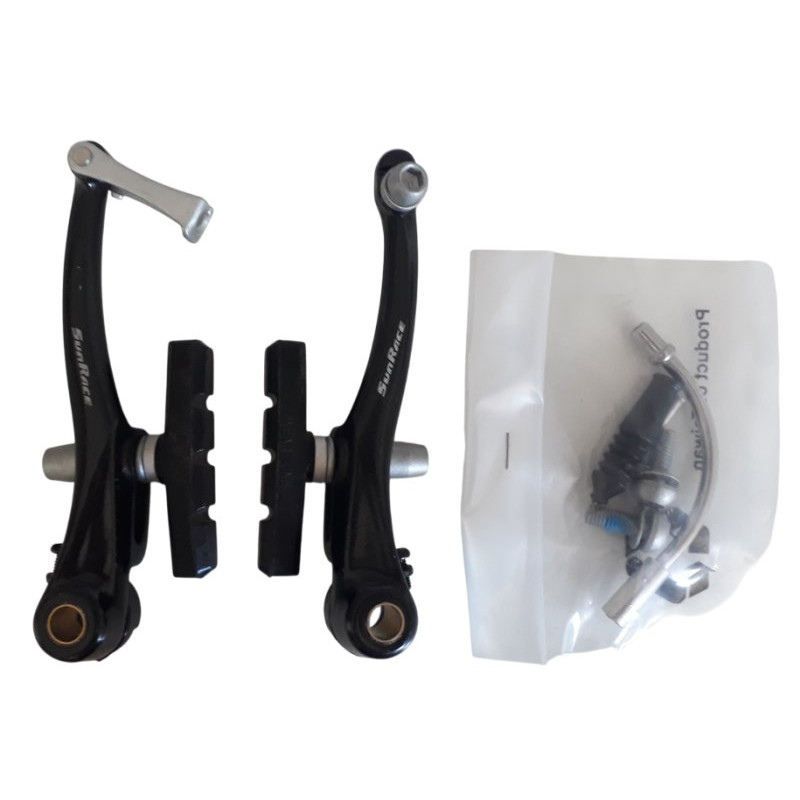 zoom_in
zoom_in
V brake
- 1 Item
- New

€8.49 VAT included
V-Brake: a reliable and efficient braking system for your bike
When it comes to choosing an effective, easy-to-maintain, and affordable braking system, the V-brake remains a key reference in the cycling world. Whether you're riding a mountain bike, a hybrid bike, or a trekking bike, this type of brake continues to win over cyclists thanks to its braking power and ease of adjustment. Let’s take a closer look at its features, benefits, and how to keep it performing at its best.
What is a V-brake ?
The V-brake, also known as a direct-pull rim brake, is a mechanical brake that works by squeezing the rim of the wheel using two pivoted arms. It’s an improved version of the older cantilever brakes, offering more power and simpler setup. The system is operated by a brake lever connected to a cable.
Commonly found on mountain bikes, trekking bikes, and commuter bikes, the V-brake remains a popular, lightweight, and cost-effective solution for many riders.
Technical features of a V-brake
Here are the main specifications of a typical V-brake:
-
Mechanical system operated by a cable, easy to maintain and replace.
-
Two long brake arms mounted on either side of the fork or rear stays.
-
Interchangeable brake pads that press directly on the rim's braking surface.
-
Adjustable cable tension for precise braking response.
-
Compatible with most standard MTB and trekking brake levers.
Advantages of the V-brake
The V-brake offers several benefits that explain its long-standing popularity, especially on mid-range bikes:
-
Strong braking power, particularly effective for a cable-operated system—even on rough terrain.
-
Low maintenance requirements—no bleeding needed like with hydraulic brakes.
-
Easy to adjust, even with basic tools.
-
Lightweight compared to many disc brake setups.
-
Budget-friendly, ideal for riders seeking good value.
A few drawbacks to consider
Despite its many strengths, the V-brake does have some limitations:
-
Less efficient in wet weather, as braking relies on rim contact.
-
Rim wear over time due to direct contact from the pads.
-
Less suited for extreme conditions like downhill MTB, where disc brakes are more effective.
How to maintain your V-brakes
To ensure optimal braking performance and extend the life of your components, follow these maintenance tips:
-
Clean your rims regularly to remove mud, grit, and debris.
-
Check brake pad wear—replace them if they’re smooth or unevenly worn.
-
Inspect cable tension—a slack cable reduces braking responsiveness.
-
Lubricate the brake arm pivots to keep them moving freely.
Who should use V-brakes ?
V-brakes are ideal for:
-
Casual or recreational riders;
-
Commuters and touring cyclists;
-
Riders looking for a reliable, affordable, and low-maintenance brake setup.
Conclusion
The V-brake remains a smart choice for many bikes thanks to its simplicity, reliability, and braking power. While it may fall short in extreme or wet conditions, it’s still an excellent option for leisure rides, moderate MTB use, and everyday commuting. With regular maintenance, it delivers consistent and safe braking performance.




